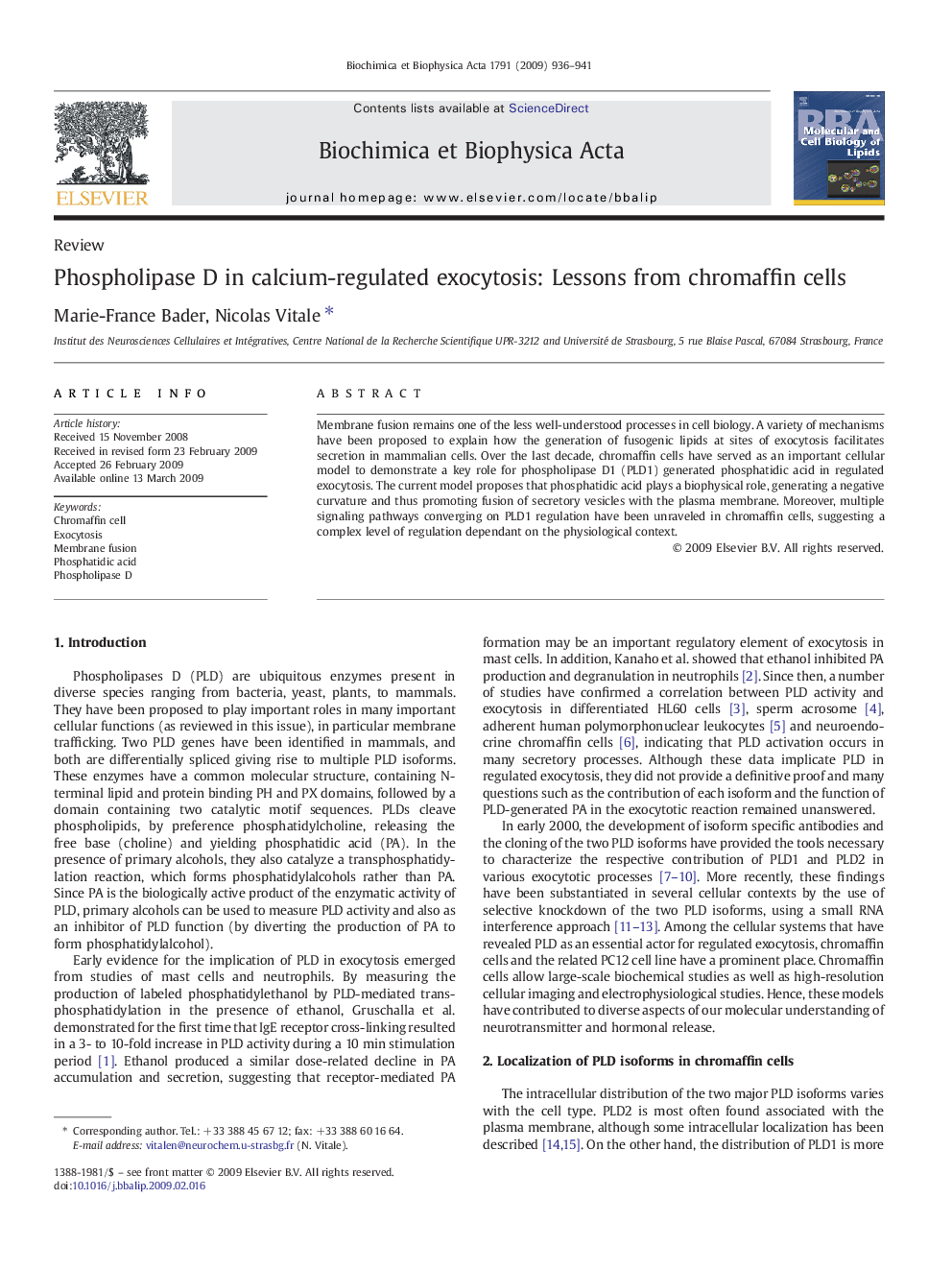| Article ID | Journal | Published Year | Pages | File Type |
|---|---|---|---|---|
| 1949847 | Biochimica et Biophysica Acta (BBA) - Molecular and Cell Biology of Lipids | 2009 | 6 Pages |
Membrane fusion remains one of the less well-understood processes in cell biology. A variety of mechanisms have been proposed to explain how the generation of fusogenic lipids at sites of exocytosis facilitates secretion in mammalian cells. Over the last decade, chromaffin cells have served as an important cellular model to demonstrate a key role for phospholipase D1 (PLD1) generated phosphatidic acid in regulated exocytosis. The current model proposes that phosphatidic acid plays a biophysical role, generating a negative curvature and thus promoting fusion of secretory vesicles with the plasma membrane. Moreover, multiple signaling pathways converging on PLD1 regulation have been unraveled in chromaffin cells, suggesting a complex level of regulation dependant on the physiological context.
